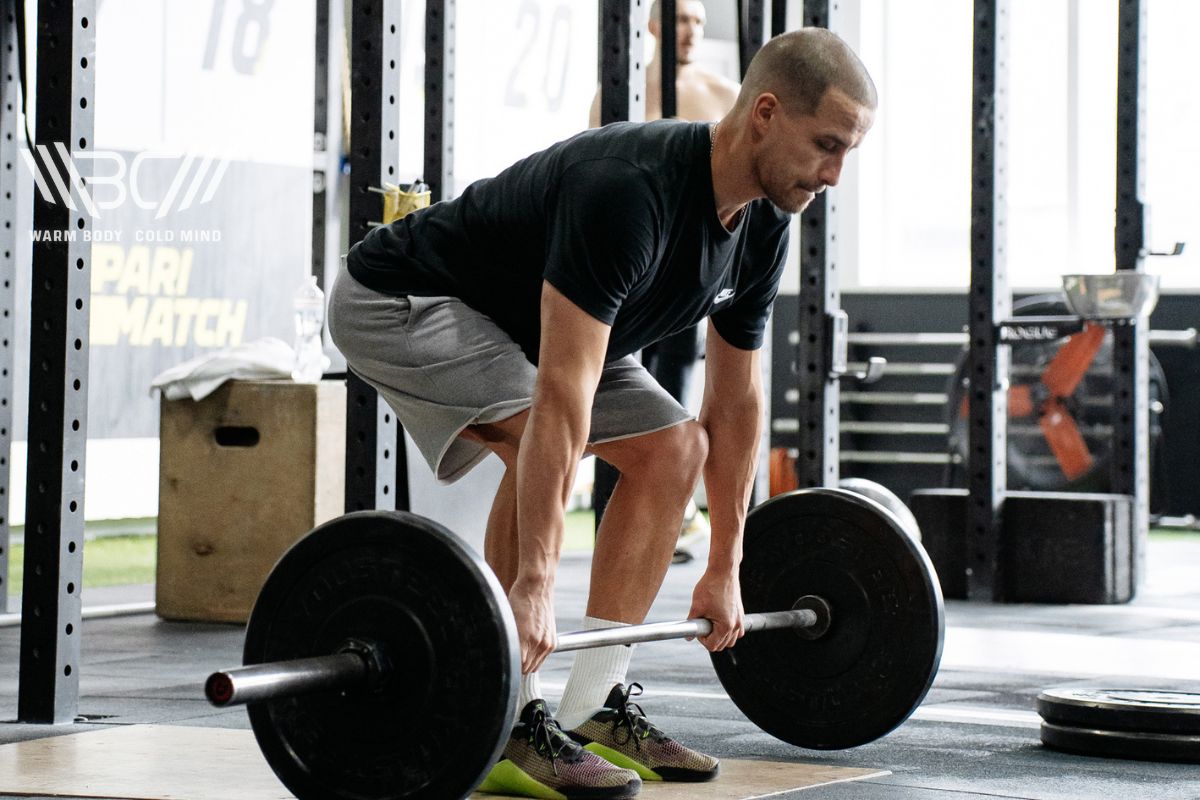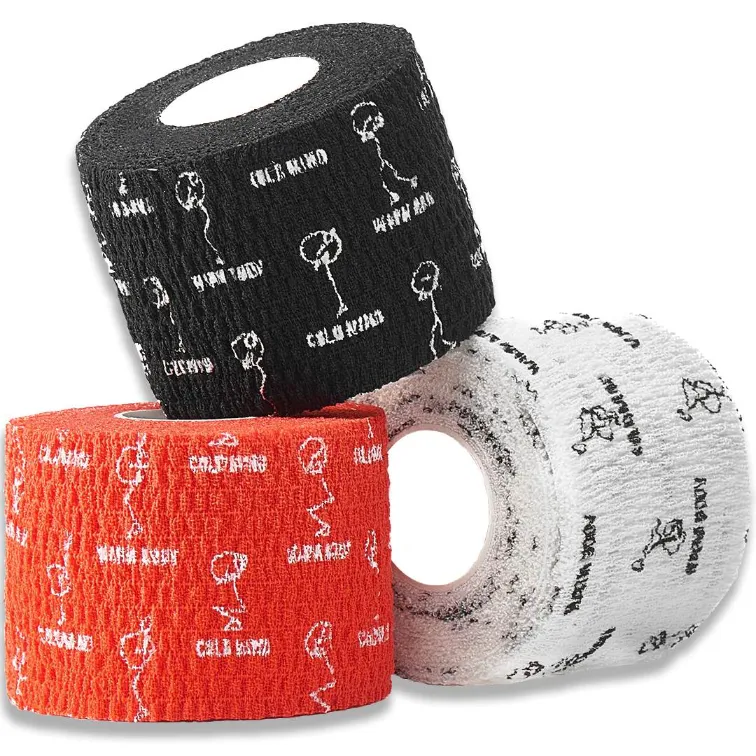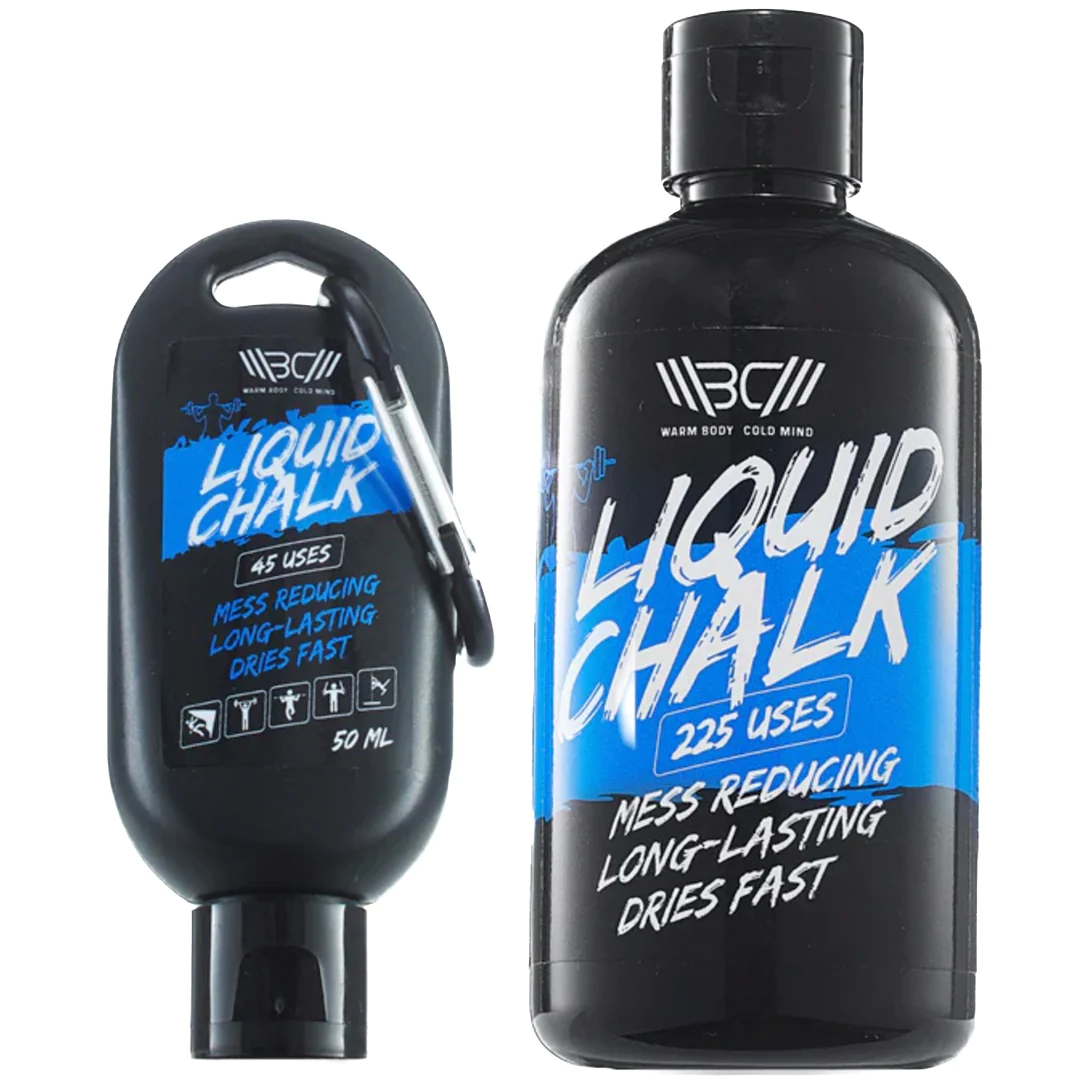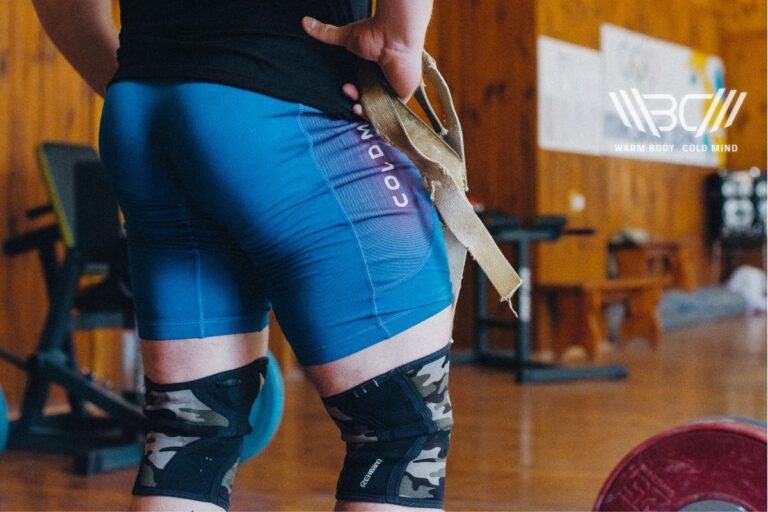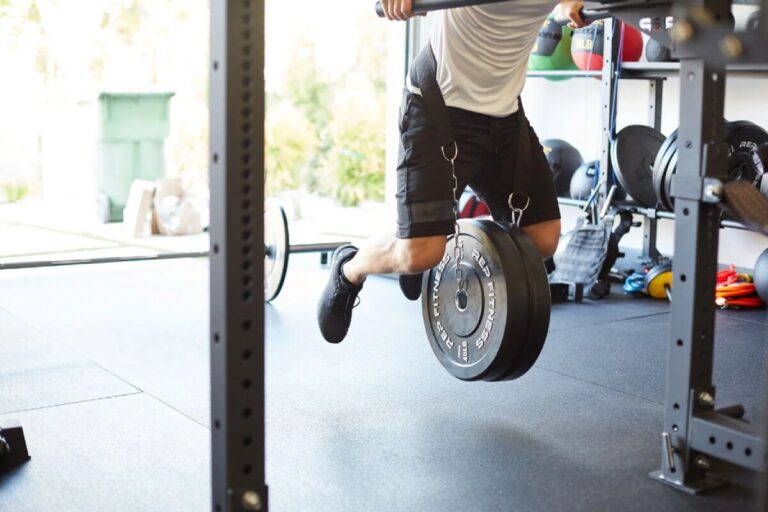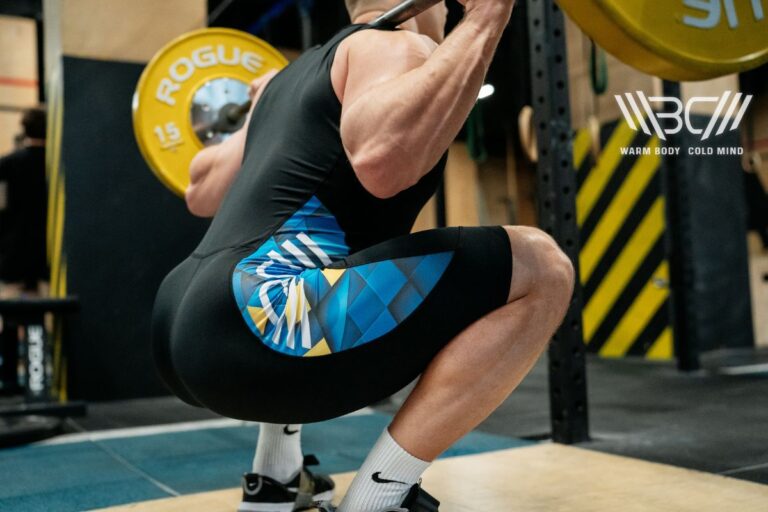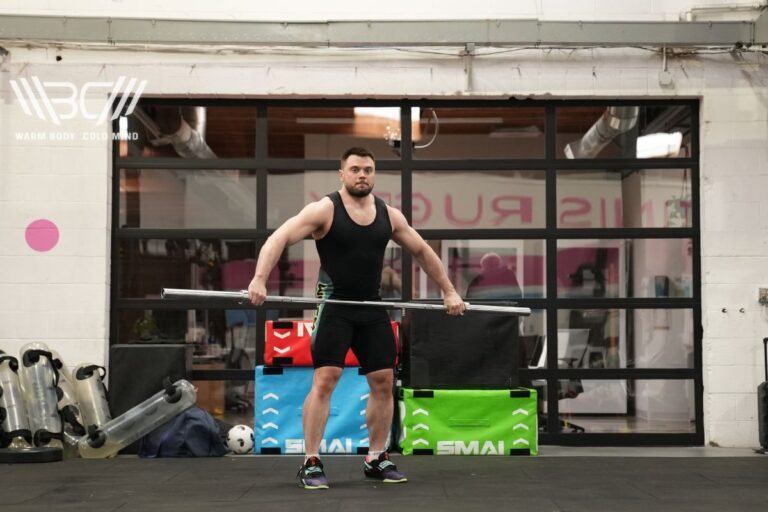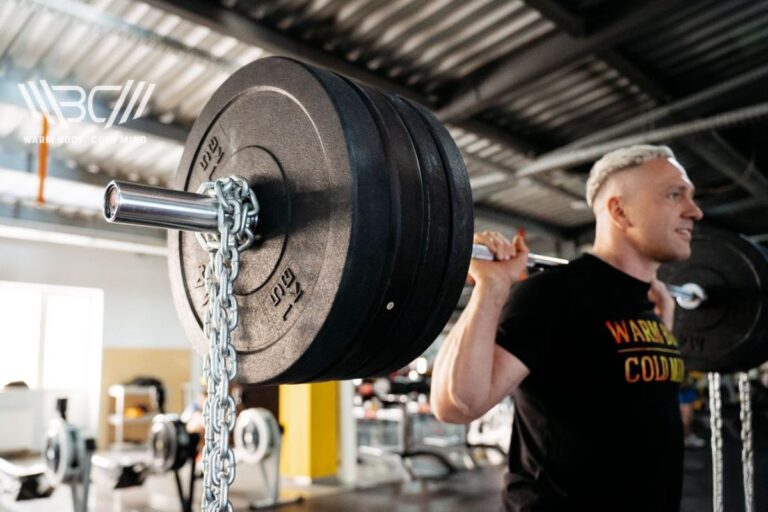Hook Grip vs Mixed Grip: Which One To Use?
Hook grip vs mixed grip is a hot debate, and it’s easy to see why as both grip types have their place in the gym. When deadlifting, it can be difficult to know whether to use a hook grip or mixed grip, as both types of grip have benefits and disadvantages worth considering.
So, hook grip vs mixed grip, which one to use?
Hook grip vs mixed grip is a valid debate, and both grip types are suitable for deadlifting. Mixed grip deadlift involves one pronated hand and one supinated hand, while hook grip is a double overhand grip with the fingers placed over the thumb. Powerlifters commonly use both types for deadlifts.
Why Does Deadlift Grip Matter?
Having a strong grip is vital when deadlifting as you need to be able to keep control of the bar throughout the entirety of the lift. A strong grip on the bar, whether it be hook grip or mixed grip means you can focus on setting yourself up in the correct position and lifting with proper deadlift form, trusting your hands will keep the bar in place.
When we gain strength in our back and legs and increase weight with deadlifts, our grip can suffer, being too weak to hold onto the heavily loaded bar. Common grip types include mixed grip where one hand is pronated and the other supinated, along with snatch grip and axle grip.
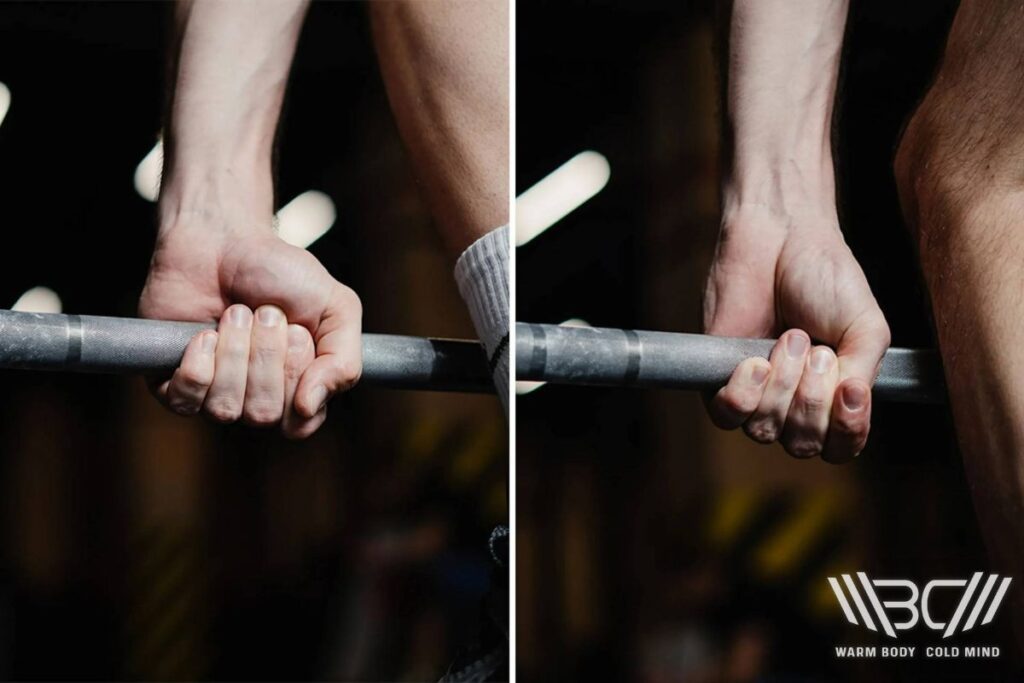
Mixed grip is a popular grip choice for many, but it’s essential to alternate hand positioning to ensure balance and equal growth on both sides of the body.
A hook grip is a double overhand grip where the fingers are wrapped around the thumb on the bar. This grip can become challenging when lifting an extremely heavy bar, but it’s the grip choice of many, especially those lifting professionally. This is because setting the body into position and creating tension in preparation for the lift is arguably easier with a hook grip as both hands are over the bar.

Maximize your lifts with Warm Body Cold Mind lifting tape, designed for the perfect hook grip.
What Is Hook Grip?
A hook grip requires placing the hands on the bar and wrapping the thumb around the bar itself, before setting the fingers on top of the thumb. Many wonder is hook grip better than other grips for deadlifts, and the answer is yes, it can be! It can take a while to get used to a hook grip if you’re a novice or have been training with a standard overhand grip or mixed grip.

Pro Tip:
Transitioning from mixed or standard overhand grip to hook grip is a good idea if you’ve steadily increased the weight you’re shifting in deadlifts, and the bar feels like it’s slipping out of your hands. By essentially pinching your thumb around the bar with your fingers, you create a hook-like bond with the bar which can result in better muscle activation and potential grip strength development.
1. Pro: Increased Safety
Safety in the gym is paramount. Lifting weight and making gains is awesome, but increasing your risk of injury isn’t so fun. Deadlifts have countless benefits and they are great to bring into your training sessions if you’re looking to build strength and hypertrophy, but it’s crucial to perform them safely.
By essentially creating a hook with your thumb, a hook grip can help keep the bar connected to your hands throughout the entire movement so it doesn’t slip or roll out of your hands.

Maximize your grip with premium quick-drying Warm Body Cold Mind liquid chalk leaving no mess.
2. Pro: Symmetrical Lift
One of the biggest advantages of using a hook grip for deadlifts is that it results in a symmetrical lift. In a mixed grip where one hand is facing up and the other facing down, it’s easy to get comfortable and not switch the hands around, leading to an imbalance in muscle use. A hook grip minimizes the risk of muscular imbalances as both arms are in the same direction, leading to a symmetrical lift where the muscles used are balanced on both sides of the body.

3. Con: Requires Good Thumb and Finger Mobility
The ability to wrap your thumb around the bar and hold it in place with your fingers can be challenging if you’ve not attempted a hook grip before. Training with a standard overhand grip or mixed grip doesn’t require too much mobility in the thumb and fingers, but this is exactly what a hook grip needs! Completing some simple mobility exercises can help increase the flexibility of your thumbs and fingers so you can use the bar with a hook grip.
4. Con: Can Be Uncomfortable
Unsurprisingly, many gym-goers ask ‘is hook grip better’ as it can be uncomfortable for those who haven’t lifted the bar in this way before. It’s possible to minimize discomfort by ensuring you’re not pinching down on the knuckle or nail of the thumb when picking up the bar.
5. How To Do Hook Grip
To do a hook grip, first, wrap your thumb around the bar so it acts as a hook. Then, take your first two fingers and pinch them on top of your thumb, avoiding pressing down onto the thumbnail as this can create discomfort during the lift. Allow your other fingers to grip the bar as normal.
Set the back into position, plant the feet, brace your core, and proceed with the deadlift. Using thumb tape with a hook grip can transform how the bar feels in your hands. Our WBCM weightlifting thumb tape is tearable, stretchy, and made from 100% cotton providing increased comfort, especially during hook grips. Affordable and available in 9 colors, you can choose the tape that fits your personality the most!
What Is Mixed Grip?
Mixed grip requires pronating one hand on the bar and supinating the other so one palm is facing upwards and the other downwards. It’s a popular grip choice for numerous lifters for a few reasons, the most common benefit being the reduced risk of the bar slipping out from the hands.
1. Pro: Prevents Bar From Slipping
Having one hand wrapped over the bar and another wrapped under the bar increases bar stability, as it will have a hard time escaping your hands and dropping to the floor. This means focus can be put more into form and completing the lift safely, than worrying about letting go of the bar.
2. Con: Can Lead To Muscle Imbalances
Consistently using the same hands in the same position, whether that be pronated or supinated can lead to muscle imbalances and asymmetries. When performing deadlifts with a mixed grip, it’s important to switch hands from time to time to ensure you’re not building muscles on one side of the body more than on the other.

3. Con: Increased Risk Of Injury
Repeatedly performing deadlifts with hands or one hand in a supinated position can increase the risk of injury in the biceps. This is a big consideration when using a mixed grip, and it’s one of the main reasons lifters switch to a hook grip as the loads they’re shifting increase. To avoid injury with a mixed grip deadlift, be sure to alternate your hands, or maybe it’s time to give a hook grip a go!
4. How To Do Mixed Grip
Place your hands on the bar in a conventional deadlift position. Grip the bar with one hand in an overhand position and the other in an underhand position. Set yourself up for the deadlift, engaging the back and core before proceeding with the lift. Our WBCM liquid chalk is the ideal addition to your deadlift days, enhancing grip strength and reducing sweat so you can grip the bar with mighty force!
Hook Grip vs Mixed Grip: Main Differences
| Hook Grip | Mixed Grip |
| Both hands are in an overhand position, with the thumb wrapped around the bar and fingers on top | One hand is placed over the bar and the other hand is placed underneath the bar |
| Requires good thumb and finger mobility | Accessible position for most |
| Keeps the lift symmetrical | Can lead to muscle imbalances |
1. Positioning
The key difference between hook grip vs mixed grip is the positioning of the hands. In a hook grip, thumbs are wrapped around the bar and the fingers wrap on top of the thumb, holding it in place. A mixed grip involves gripping the bar with one hand in a supinated position and the other hand in a pronated position, so one is facing up and the other is facing down.
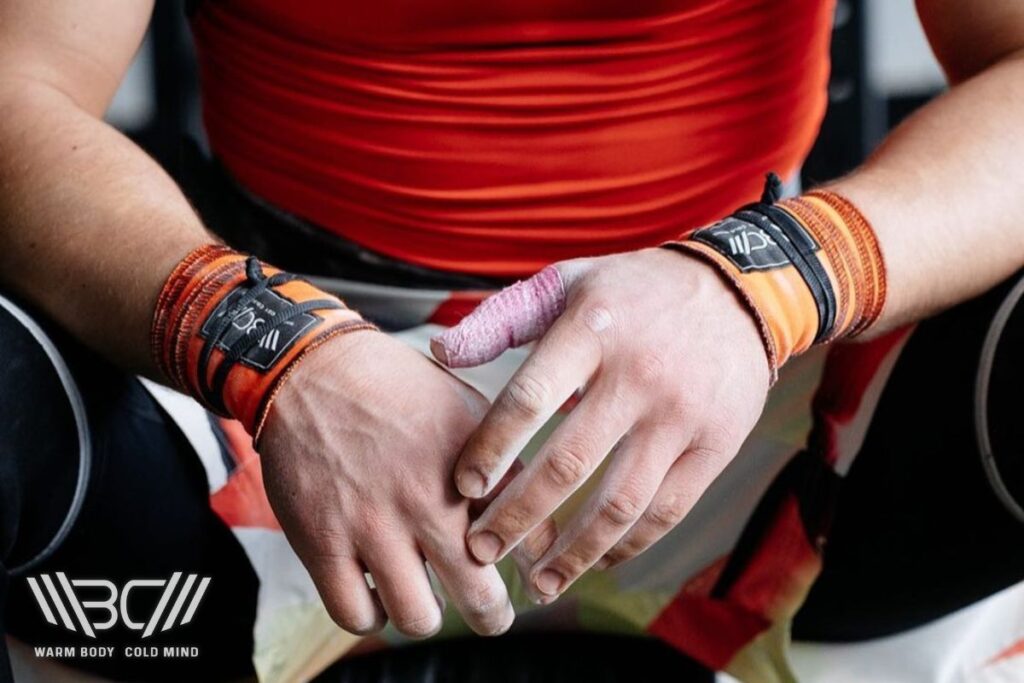
2. Mobility
To achieve a quality hook grip, you need to be able to wrap your thumb around the bar and use your first two fingers to essentially pinch it in place, avoiding the nail and knuckle. This can be tricky if you haven’t attempted a hook grip before, but it gets easier with simple mobility exercises and practice.
A mixed grip is an achievable position for most, though it’s best to avoid getting too comfortable as you’ll need to switch hands to aid in preventing imbalances.
FAQ
Why Is Hook Grip So Hard?
Hook grip can feel hard as the thumb is acting as a hook, bringing security and stability to the bar. If you haven’t adopted this position before, a hook grip can feel uncomfortable. Make sure you’re not pinching your index and middle finger down onto your thumbnail, and ensure you’re also not pressing down on your knuckle as this can be painful too.
Is Mixed Grip Better?
Hook grip or mixed grip is a big debate and both have their time and place in the gym. Mixed grips can be better than standard overhand grip when deadlifting as the supinated hand prevents the bar from slipping or sliding around during the lift. It’s imperative to switch hands throughout your training with a mixed grip, as this position can create muscle imbalances.
Do All Powerlifters Use Hook Grip?
Powerlifters use a mixture of hook grips and mixed grips with deadlifts, as it boils down to personal preference. Both mixed and hook grips tend to be favored over standard overhand grips as it’s extremely difficult to keep hold of a bar while deadlifting heavy weight.
Conclusion
Mixed grip vs hook grip is a huge debate in the fitness community, and both types of grip can be used successfully for deadlifting. It’s wise to consider the pros and cons of using hook grip or mixed grip in your training as both have benefits and potential drawbacks.
Which grip do you use and why? We’d love to hear your thoughts in the comments!
Also read:
References:
- Jedd Pratt, Arianna Hoffman, Adam Grainger, Massimiliano Ditroilo, “ Forearm electromyographic activity during the deadlift exercise is affected by grip type and sex”, National Center For Biotechnology Information, https://pubmed.ncbi.nlm.nih.gov/32446132/ (Accessed February 17 2024)
- Matthew R. Wenning, MS, “The Deadlift and Its Application to Overall Performance”, National Strength and Conditioning Association, https://www.nsca.com/education/articles/tsac-report/the-deadlift-and-its-application-to-overall-performance/ (Accessed February 17 2024)
- “5 exercises to improve hand mobility”, Harvard Medical School, https://www.health.harvard.edu/pain/5-exercises-to-improve-hand-mobility (Accessed February 17 2024)
- Luke Allen Beggs, “Comparison of muscle activation and kinematics during the deadlift using a double-pronated and overhand/underhand grip”, University of Kentucky, https://uknowledge.uky.edu/cgi/viewcontent.cgi?article=1085&context=gradschool_theses (Accessed February 17 2024)
- Mehmet Kapicioglu, MD, Emre Bilgin, MD, Necip Guven, MD, Anil Pulatkan, MD and Kerem Bilsel, MD, “The Role of Deadlifts in Distal Biceps Brachii Tendon Ruptures: An Alternative Mechanism Described With YouTube Videos”, National Center For Biotechnology Information https://www.ncbi.nlm.nih.gov/pmc/articles/PMC8237209/ (Accessed February 17 2024)
Author: Jason Li
Personal Coach | Functional Range Conditioning Mobility Specialist
Jason is an NYC personal training expert and National level Olympic Weightlifting Coach with over 10 years of experience training everyday clients to high levels of performance. He has trained everyone from youth (13 years old and under) to masters (60+ years old) to regional and national rankings for powerlifting, Olympic Weightlifting, Short distance (up to 200m) sprinting, discus & hammer throwing.

